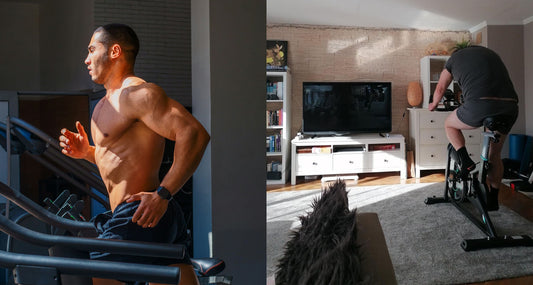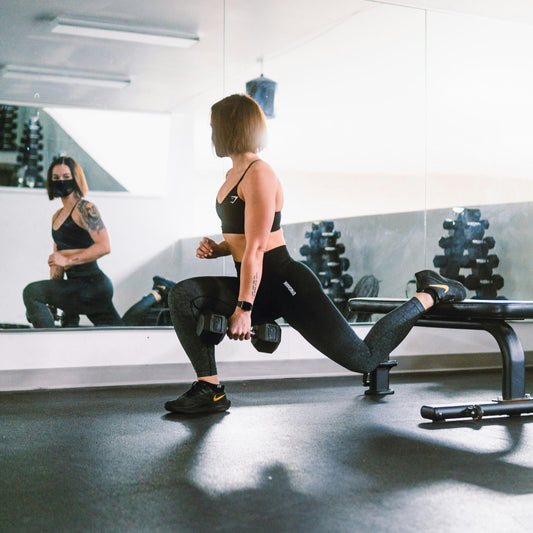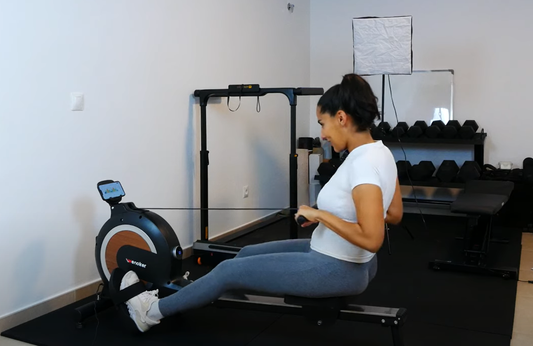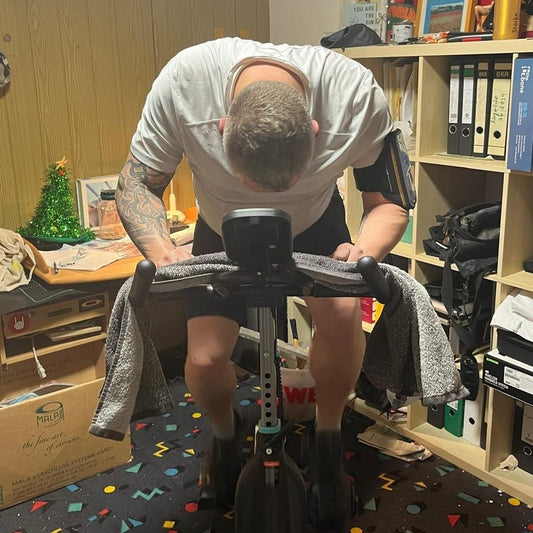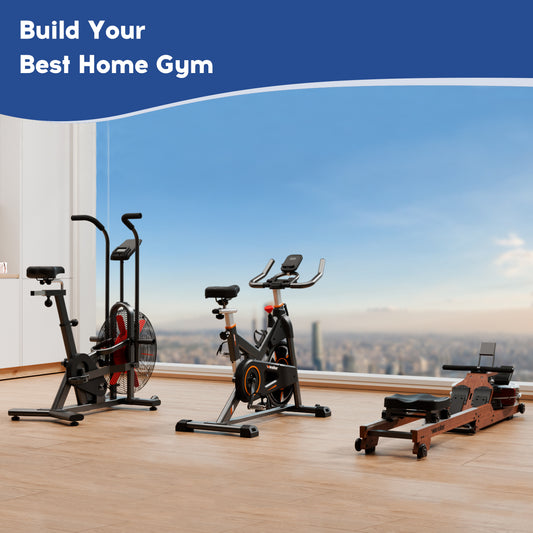by Dylan on September 1, 2025
Unlock the full muscle-building potential of your rowing machine with proper technique and science-backed workouts
The rowing machine has experienced a remarkable resurgence in fitness circles, moving from a forgotten corner cardio machine to a coveted centerpiece for full-body transformation. But amidst the growing popularity, many fitness enthusiasts still wonder: can this low-impact machine truly build substantial muscle?
The answer isn't just a simple yes—it's a resounding affirmation backed by exercise science. When used correctly, a rowing machine doesn't just burn calories; it can reshape your physique, enhance muscular definition, and build functional strength that translates to real-world movements.
What Makes Rowing Machines Unique for Muscle Building?
Unlike many gym machines that isolate specific muscle groups, the rowing machine provides a compound movement that engages multiple joints and muscles simultaneously. This coordinated effort creates an anabolic environment ideal for muscle growth when combined with appropriate resistance and nutrition.
The beauty of rowing lies in its sequential engagement pattern: legs initiate the movement, followed by core stabilization, then upper body completion. This kinetic chain recruitment mirrors how our bodies are designed to work in athletic movements and daily activities.

The Muscle Building Mechanics of Rowing
Proper rowing technique activates approximately 86% of your muscle groups in a single fluid motion. The movement divides into three distinct phases, each emphasizing different muscle groups:
- The Catch: Starting position with knees bent, shins vertical, and arms extended forward. This phase primarily engages your quadriceps, hamstrings, glutes, and calves.
- The Drive: Initiated by powerful leg drive, followed by core engagement and back muscles, completed with arm flexion. This phase works your legs, back, arms, and core comprehensively.
- The Recovery: The return to starting position, focusing on controlled extension and preparation for the next stroke. This phase engages your triceps, biceps, and forearms.
Types of Rowing Machines and Their Muscle-Building Benefits
Not all rowing machines are created equal. Understanding the different types can help you maximize your muscle-building potential:
- Water Rowing Machine: Uses water resistance for a naturally progressive resistance curve that matches your effort level. The soothing sound of water and smooth motion make it a favorite for home gyms.
- Seated Rowing Machine: The standard design found in most gyms, typically using magnetic or air resistance. Excellent for mastering proper form and performing varied workouts.
- T-Bar Rowing Machine: Although technically a different piece of equipment, the T-bar row shares principles with seated rowing and specifically targets back thickness and strength.
- Cable Rowing Machine: Often found as a station on multi-gym setups, these allow for varied grip positions and specialized rowing movements.
- High Rowing Machine & Low Rowing Machine: These terms typically refer to pulley position on cable machines, affecting which parts of your back are emphasized during the movement.

What Muscles Does a Rowing Machine Work?
Understanding the specific muscles engaged during rowing helps target your efforts and maximize results:
Primary Movers:
- Back Muscles: Latissimus dorsi (the "lats"), rhomboids, trapezius, and erector spinae.
- Leg Muscles: Quadriceps, hamstrings, glutes, and calves.
- Arm Muscles: Biceps, triceps, and forearms
Stabilizers:
- Core Muscles: Abdominals, obliques, and lower back muscles act as stabilizers throughout the movement.
This comprehensive muscle engagement makes rowing exceptionally efficient for building balanced musculature throughout your entire body.
How to Use a Rowing Machine for Maximum Muscle Growth
Proper technique is crucial for both effectiveness and safety. Here's how to use a rowing machine correctly:
1.Starting Position (The Catch): Sit tall with your chest up and shoulders relaxed. Your knees should be bent with shins vertical, and you should reach forward to grip the handle comfortably.
2.The Drive: Push through your heels forcefully, extending your legs while keeping your arms straight. As your legs near extension, hinge your torso backward and pull the handle toward your lower chest.
3.The Finish: Your legs should be fully extended with slight flexion in the knees, torso leaning back about 15 degrees, elbows pulled back with the handle close to your body.
4.The Recovery: Extend your arms forward, hinge your torso forward from the hips, then bend your knees to return to the starting position.
Common mistakes to avoid: Using too much arm strength (legs should provide 60-70% of the power), rounding your back (maintain a neutral spine), and making sudden movements (keep motions smooth and controlled).

Advanced Rowing Workouts for Muscle Building
Beyond steady-state rowing, these targeted workouts will challenge your muscles differently and stimulate growth:
1. Power Pyramid Intervals
This workout progressively increases and decreases intensity to challenge muscular endurance and recovery capacity.
- Warm-up: 5 minutes easy rowing
- Row hard for 1 minute, rest for 1 minute
- Row hard for 2 minutes, rest for 2 minutes
- Row hard for 3 minutes, rest for 3 minutes
- Reverse the sequence (3-2-1)
- Cool-down: 5 minutes easy rowing
2. Sprint Interval Protocol
Short, maximal efforts recruit fast-twitch muscle fibers crucial for growth.
- Warm-up: 5-10 minutes light rowing
- Set monitor for 500-meter intervals
- Perform 4-8 sprints at 90-100% effort
- Recover completely between sprints (2-3 minutes)
- Cool-down: 5 minutes light rowing
3. Resistance-Specific Training
Varying your resistance settings targets different muscle fibers:
- High Resistance, Low Cadence: Builds strength and power (20-24 strokes per minute)
- Moderate Resistance, Moderate Cadence: Builds muscular endurance (26-30 SPM)
- Low Resistance, High Cadence: Improves cardiovascular capacity (30+ SPM)
Integrating Rowing into Your Strength Training Program
For optimal muscle building, combine rowing with traditional strength training:
- Pre-Workout: Use 5-10 minutes of light rowing as a dynamic warm-up to activate multiple muscle groups.
- Post-Workout: Follow strength training with 20 minutes of moderate rowing to increase blood flow to tired muscles and enhance recovery.
- Standalone Cardio: On non-lifting days, perform interval rowing sessions to build endurance without interfering with strength recovery.
- Circuit Training: Incorporate 2-3 minute rowing intervals between strength exercises to maintain elevated heart rate and increase calorie burn.
Nutrition and Recovery for Muscle Growth
Remember that muscle building happens during recovery, not during workouts. Support your rowing training with:
- Adequate Protein: Consume 1.6-2.2 grams of protein per kilogram of body weight daily to support muscle repair and growth.
- Proper Hydration: Rowing is demanding—drink at least 3-4 liters of water daily, more on intense training days.
- Quality Sleep: Aim for 7-9 hours of quality sleep nightly, when most muscle repair occurs.
- Periodization: Vary your rowing intensity throughout the week to allow for proper recovery while maintaining consistency.

Beyond Muscle: Additional Benefits of Rowing
While muscle building is a significant advantage, rowing offers other impressive benefits:
- Joint-Friendly: The low-impact nature of rowing makes it suitable for people with joint concerns or those recovering from injuries.
- Improved Posture: Regular rowing strengthens back and core muscles, counteracting the forward hunch developed from prolonged sitting.
- Mental Resilience: The rhythmic nature of rowing provides meditative benefits, reducing stress while building physical and mental endurance.
- Time Efficiency: A 20-minute high-intensity rowing session can provide both cardiovascular and strength benefits, making it perfect for busy schedules.
Conclusion: Your Journey to a Stronger Physique
The rowing machine stands unique in the fitness landscape—a single piece of equipment that simultaneously builds muscle, burns fat, and improves cardiovascular health. By mastering proper technique, implementing strategic workouts, and supporting your training with proper nutrition and recovery, you can transform your body with this remarkably efficient tool.
Whether you're using a water rowing machine for its natural resistance or a seated rowing machine at your local gym, the principles of effective muscle building remain the same: progressive overload, technical precision, and consistent effort.
Stop viewing the rower as just cardio equipment and start recognizing it as the full-body muscle-building powerhouse it truly is. Your journey to a stronger, more defined physique might be just a stroke away.
Ready to transform your body with rowing? Share your favorite rowing workout in the comments below!



